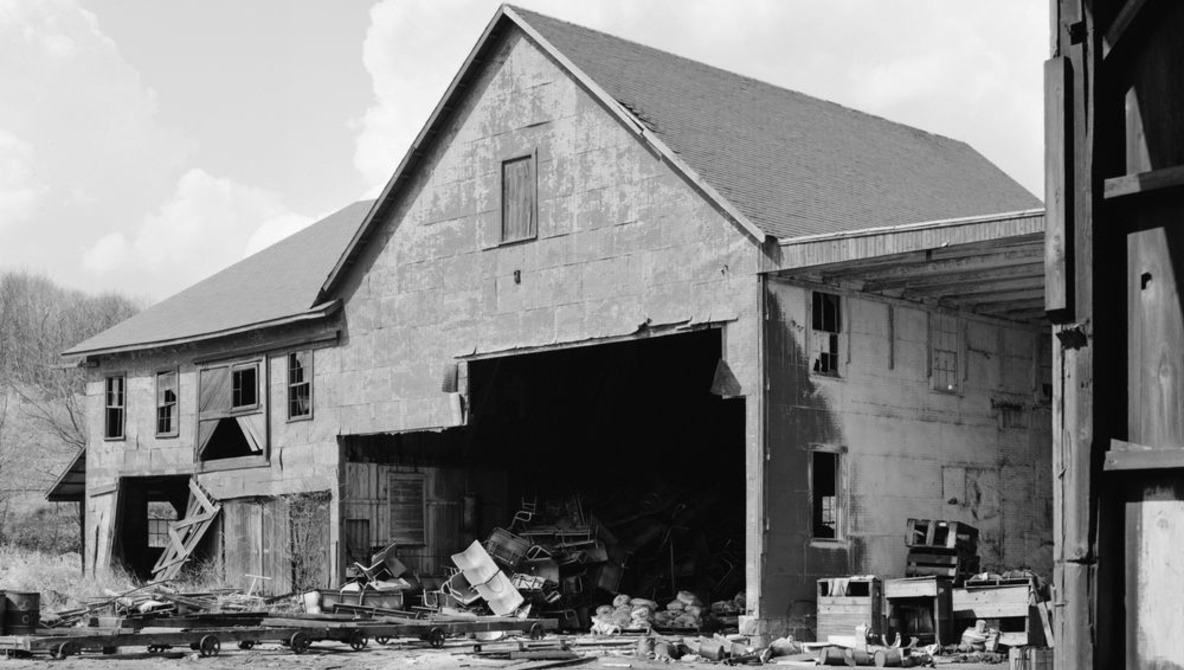This photo is striking. Skimming through the archives at the Library of Congress, I was immediately drawn to this image. But why?
To the contemporary eye, what was it that attracted the attention? For me, it was the fact that it wasn't contemporaneous. The scene itself is a derelict building illustrative of small-scale industry across the US, indeed across the world. It was once supported by an economy that financed the construction of such an edifice, but now is in decrepit decline. Strewn waste, broken windows and a lack of occupation all testify to its dereliction, although the roof is surprisingly well intact. Of course, much light industry, marginalized on the edges of society, continues to eek out a living in increasingly desperate straits. Think James Agee's sharecroppers or John Berger/Jean Mohr's eastern European workers (powerfully prescient of the present).

Thames Tow Boat Company, Connecticut
Of course, such a scene could be contemporary at any point over the last 100 years: we've all seen buildings like these in the landscape slowly rotting. It is timeless both in the scene itself and in our interpretation of it. So, when was the photo taken? And why? By who? The Library of Congress credits the photo to Jack Boucher and it is taken from the National Park Service's Historic American Engineering Record, which began in 1969. Boucher is a giant in the field, having been the Chief Photographer, specializing in large format photography and serving for over 40 years. Not surprisingly, the Library of Congress has nearly 20,000 photos taken by him.
This photo isn't dated, but my guess is that it was taken in the 1970s. Boucher was employed by the NPS in 1958, with a brief spell working in New Jersey during the late 1960s, although the photo could easily be later. Helpfully (and in the spirit of Google's Streetview) the address is given (New London, Connecticut,) which has subsequently been geocoded to the latitude and longitude (see the contemporary Google image).
But back to the image itself: the fact that it's black and white dates it culturally, along with the implicit aspect ratio, which the notes say is from a large format 5x7 negative. Then there's the tonal range: it's huge, just dipping into blacks around the top of the door frame and then through to the whitest whites in the cloud, along with full texture in the sky and detail in the shadows. It's a masterclass in exploiting the negative to its fullest potential.
Then there's the framing: why did he take it from inside the tunnel? Why did he use the entrance as a frame? If this was a sterile recording of buildings before they disappear, then you have to wonder why front and side profiles were not considered (or maybe they were). Yet, the framing works; besides drawing the eye to the distant building while simultaneously providing us with the textures of the construction materials, it also sets up the scene geometrically. It's an image of triangles: the shadows at the top and bottom, the main gable, then each of the roofs on either side.
You get the sense that this is a well-practiced photographer who implicitly knows the frame, field of view. and dynamic range of his equipment. While we may instinctively think of architectural photography as a faithful record, this image demonstrates that it can also have soul. It draws you into the scene, to experience it as if you were there. And you can't ask for more than that.
Image courtesy of the Library of Congress.







Ah, you've discovered architectural photography and taken your first step into a larger world :)
:) and what a master Boucher was. Amazed i hadn't come across him before
Two cheers for visual literacy!